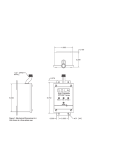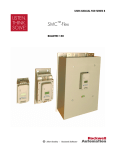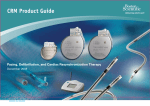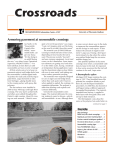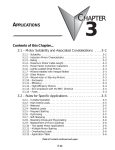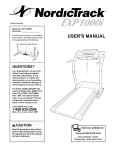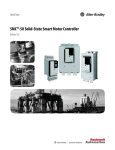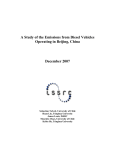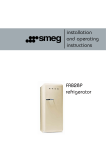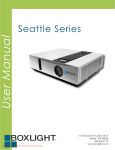Download wye-delta and solid state starter application guide
Transcript
WHITE PAPER WYE-DELTA AND SOLID STATE STARTER APPLICATION GUIDE EXPLANATION AND ASSISTANCE FOR APPLYING SOLID STATE SOFT STARTERS IN TRADITIONAL REDUCED VOLTAGE APPLICATIONS Introduction. . . . . . . . . . . . . . . . . . . . . . . . . . . . . . . . . . . . . . . . . . . . . . . . . . . . . . . . . . . . . .2 Power Distribution Terminology. . . . . . . . . . . . . . . . . . . . . . . . . . . . . . . . . . . . . . . . . . . .2 Traditional Design Theory . . . . . . . . . . . . . . . . . . . . . . . . . . . . . . . . . . . . . . . . . . . . . . . . .3 Delta Connection . . . . . . . . . . . . . . . . . . . . . . . . . . . . . . . . . . . . . . . . . . . . . . . . . . . . . . .4 Wye Connection. . . . . . . . . . . . . . . . . . . . . . . . . . . . . . . . . . . . . . . . . . . . . . . . . . . . . . . .4 Motor Identification . . . . . . . . . . . . . . . . . . . . . . . . . . . . . . . . . . . . . . . . . . . . . . . . . . . . .5 Electro-Mechanical Wye-Delta vs. Solid-State Starters. . . . . . . . . . . . . . . . . . . . . . .7 Solid-State Starting Advantages . . . . . . . . . . . . . . . . . . . . . . . . . . . . . . . . . . . . . . . . . . .9 Solid-State Starters for Wiring Inside-the-Delta. . . . . . . . . . . . . . . . . . . . . . . . . . . . .11 Sizing . . . . . . . . . . . . . . . . . . . . . . . . . . . . . . . . . . . . . . . . . . . . . . . . . . . . . . . . . . . . . . .11 Connections and Set-up. . . . . . . . . . . . . . . . . . . . . . . . . . . . . . . . . . . . . . . . . . . . . . . . .13 Application Examples. . . . . . . . . . . . . . . . . . . . . . . . . . . . . . . . . . . . . . . . . . . . . . . . . . . .15 Important Application Considerations. . . . . . . . . . . . . . . . . . . . . . . . . . . . . . . . . . . . . .17 Appendix A . . . . . . . . . . . . . . . . . . . . . . . . . . . . . . . . . . . . . . . . . . . . . . . . . . . . . . . . . . . . .18 Wye-Delta and Solid State Starter Application Guide Introduction The theory of applying reduced voltage to a motor for the purpose of altering the motors torque and power consumption characteristics is an idea that has existed for many years. These concepts have flourished mainly due to the need to limit torque and limited generator/power distribution capabilities. In addition, energy conservation initiatives have forced local governments to place mandatory reduced voltage starting requirements on motors rated at 7.5 Hp (5.5 kW) and larger. Reduced voltage starting can be accomplished through various methods including part winding, wound rotor, auto-transformer, wye-delta, or solid-state. While many of these techniques require specialty motors or special system components, the wye-delta and solid-state method are the simplest to apply. Applications employed throughout the United States differ, but over the years the dominant method world wide has been the wye-delta or star-delta starting technique. The latest generation of soft starters and Smart Motor Controllers (SMCs) offer significant advantages over its predecessors when it comes to applying it in wye-delta applications. In most cases these solid-state products can be used to replace or retrofit any of the traditional reduced voltage methods. The SMC product line has been specially designed to take full advantage of solid-state technology and advanced features to provide a cost effective modular solution to both new and old reduced voltage applications. Power Distribution Terminology Approximately 75% of the world’s power systems are supplied as wye power from the transformer. Whether the power is supplied as wye or delta makes little difference to the system starter components provided there is an appropriate voltage potential and phase relationship present. The diagram shown as Figure 1 illustrates a simple connection scheme of the incoming utility power through the motor. Keep in mind that there are many different configurations throughout the world, but a wye configured system operating at 380 to 415V is the most common. In the United States there is both wye and delta power systems ranging from 240 to 480V AC. When this document uses the term wye-delta motor configuration, it is simply referencing the way in which the motor windings are connected to the power system. As we will discuss, the physical connection of these windings has an effect on the actual applied voltage to the windings regardless of the power configuration from the transformer. 2 Wye-Delta and Solid State Starter Application Guide Figure 1. Simple System Line Diagram Traditional Design Theory By definition, wye-delta is a traditional electro-mechanical method of reducing the voltage applied to the motor during starting. While this method has significant advantages over conventional full voltage starting, the disadvantage is that it requires more panel space, more components, and most importantly a motor that has all its winding terminations available to the outside so the wye connection can be created. While the term “reduced voltage starter” is used for the wye-delta starting method, in actuality the full line voltage is still being applied to the motor leads. The reduced voltage occurs simply because of the electrical characteristic of the Wye vs. Delta relationship. 33 Wye-Delta and Solid State Starter Application Guide Delta Connection The Delta configuration shown in Figure 2 shows the resulting applied voltage on a delta connection. This is the most common way a motor is connected for direct on line, full voltage starting. The motor windings are designed to operate at the nominal full voltage rating, which is 400V outside the United States or 480V within the U.S. Figure 2. Voltage on Delta Connection As an example let's examine the electrical characteristics of a 15 kW/20 Hp 1800 RPM motor. The full load current is approximately 30 A at 400V or 26 A at 480V. If we assume that the nominal starting current is 600% of full load current, then the resulting inrush current during starting is about 180 A/156 A respectively. The resulting starting torque would be 100% of the motors nominal full load torque. Wye Connection With the windings in a wye connection rather than the delta, the full voltage applied line to line is the same, but the voltage across the individual motor windings is reduced as shown in Figure 3. The voltage is reduced by the inverse of the square root of 3 or 57.7% of full voltage. 1 ⎞ 480V 480 x 480 = (.577) x 480 = 277V Starting Voltage Reduction = ------------ = --------- = ⎛ 3 1.73 ⎝ 1.73⎠ For power systems with a Line to Line (L to L) voltage of 400V or 480V the actual voltage across the motor windings is the Line to Neutral (L to N) voltage of 230V or 277V respectively. 4 Wye-Delta and Solid State Starter Application Guide Figure 3. Voltage on Wye Connection The effect of applying reduced voltage across the windings during starting can be best explained by our example. Using the wye connection, the starting current is proportional to the voltage reduction therefore: LRA⎞ 156 ⎞ Starting Current Reduction = ⎛ x 57.7% = ⎛ x 57.7% = 51 A ⎝ 1.73⎠ ⎝ 1.73⎠ Using the information (LRA = 180 A/156 A) the wye connection current would be approximately 60 A for 400V or 51 A for 480V. It is easy to notice the large reduction in current, however the result of the reduced voltage also means that some starting torque is sacrificed. The reduction in torque would be approximately equal to the square of the reduction of voltage across the motor windings, or: 2 2 Starting Torque Reduction ∞ (%V ) = (.577 ) x 100% = 33% of full load torque Motor Identification Whether the application is new or existing, identifying wye-delta connected motors can be easy. The motor nameplate and connection diagram will typically indicate wye-delta or stardelta, but there may also be references to low volts and high volts. As discussed previously, the voltage plays a big part in the characteristics of wye-delta applications. This is why the most common voltage combinations are 220/380V AC and 277/480V AC. Physically a single voltage wye-delta motor will have six leads marked T-1 through T-6. In comparison a standard single voltage delta motor has three leads which are marked T-1 through T-3. For dual voltage motors the wye-delta motor will have 12 leads marked T-1 through T-12 where as the standard delta motor has nine leads T-1 through T-9. Figure 4 shows two common connection diagrams for both a six-lead single voltage wye-delta motor and a 12-lead dual voltage wye-delta motor. 55 Wye-Delta and Solid State Starter Application Guide Figure 4. Sample Motor Nameplate Diagrams While investigating existing applications, look at the installed starter taking special note of the number of contactors and overloads. The majority of traditional wye-delta starters will have three contactors (two typically the same size and one slightly smaller) along with one overload. Keep in mind that there are other possible six-lead motor configurations such as two-speed motors which in contrast have two overloads. In these cases it is best to compare the system components to the schematics shown in Appendix A and look for other key indicators such as operating voltage, nameplate information, and available connection diagrams. Though these are the most common configurations, there is no limit to the amount of variations or special motors that could exist. Therefore, in addition to the physical information it is important to realize that 80% of standard IEC style 50 Hz motors have six or twelve leads and are designed for wye-delta starting. Less then 1% of standard 60 Hz NEMA style motors are wired wye-delta and most are special ordered unless larger than the 200 Hp frame size where many manufactures make the connections standard. The diagram shown in Figure 5 represents a common connection diagram taken from an actual six-lead motor. In this case all of the wires would be available at the terminal or conduit box. The first phase leads are numbered “T1” and “T4”. The second phase “T2” and “T5”, and the last is numbered “T3” and “T6”. 6 Wye-Delta and Solid State Starter Application Guide Figure 5. Sample Wye-Delta Connection Diagram As noted in Figure 4 (A) for connecting the motor for full voltage, leads 1 and 6 are connected together forming T1 and connected to L1. Correspondingly leads 3 and 5 as well as 2 and 4 are connected together forming T3 and T2. When connecting the motor for reduced voltage and starting current the leads must be connected in the wye or star configuration. By connecting the motor in the star connection, leads 4, 5, and 6 are tied together and lead T1, T2, and T3 are connected to L1, L2, and L3. While these are common connections, always check with the motor manufacture or the user manual to insure the connections are the same before applying power. ElectroMechanical Wye-Delta vs. Solid-State Starters The most widely used configuration of the electro-mechanical wye-delta starter is referred to as open transition. The typical circuit includes three separate contactors, an overload relay, a timer, and an interlock. A sample wiring diagram is included in Appendix A as Figure 9. The term open transition is used to describe this method because the motor is momentarily disconnected from the line when changing from the wye to the delta configuration. This method has one important disadvantage. Depending on the loading of the motor and the timing of this transition the resulting surge in current and torque could produce electrical and mechanical shocks on the system. In some cases the instantaneous current peaks can exceed even the locked rotor current for short durations. Figure 6.A shows this effect graphically. Electrically the consequence of the instantaneous peaks could be power fluctuations or losses. Mechanically the increased torque resulting from the current spike could be enough to damage system components (i.e., snap a drive shaft). 77 Wye-Delta and Solid State Starter Application Guide Figure 6. Current and Speed Relationship for Various Reduced Voltage Methods An alternate method to open transition wye-delta starting is called closed transition. The theory of operation is identical with the addition of a few components needed to eliminate or reduce the surge associated with the open transition. The additional components include a contactor and few power resistors. The advantage of this method can be seen in Figure 6.B as the transition surge is virtually eliminated, while the disadvantage is additional components, panel space, and power consumption. A sample diagram of this circuit is provided in Appendix A as Figure 10. The solid-state starters offer another technique of reduced voltage starting. The use of solid-state electronics to control the voltage, and subsequently provide transitionless starting (Figure 6.C) has been employed throughout industry since the 1980s. Solid-state starters, often referred to as Soft Starters, have primarily been used on three leaded delta connected motors. However, the ability to be applied to six leaded motors has always been present. The simplest way of explaining this is wye-delta starters reduce the voltage to the motor through an electrical relationship and physical connection, while solid-state starters simply reduce the voltage electrically. By offering this connection option, all six motor leads are brought back to the control just like an electro-mechanical wye-delta starter. However, the motor is actually always connected in a delta configuration and that means the starting line current to torque ratio is different than a traditional wye-delta starter. For a soft starter to replace a wye-delta starter it needs to reduce torque or limit current during the wye or start mode and then after a fixed time switch to full voltage. These requirements can be achieved by using the “current limit” mode of soft starting for a specified period of time. In addition the electro-mechanical Y-D starter has one fixed output (57.7% voltage), but the soft starter current limit mode allows several output levels that can be adjusted to match the load requirement. The starting torque to current ratio for a soft starter wired to a six-lead motor varies as the square of the ratio of soft start starting current level (Icl) divided by the full voltage starting current (ILRA). ⎛ I cl ⎞ 2 Starting Torque Reduction ∞ ⎜ ⎟ x 100% ⎝ I LRA⎠ 8 Wye-Delta and Solid State Starter Application Guide Table 1 shows the torque output of a motor with a full voltage starter, traditional wye-delta starter, and a soft starter at various current limit settings. Table 1 Starting Torque and Currents % Voltage Applied During Start % Full Load Starting Torque % Full Load Rated Current Full Voltage 100 100 600 Wye-delta Starting 58 33 200 150% 25 6 150 200% 33 11 200 250% 42 18 250 300% 50 25 300 350% 58 34 350 400% 67 49 400 450% 75 56 450 Starting Type Soft Start with various current limit settings Solid-State Starting Advantages The latest extension to Allen-Bradley's line of solid-state starters is the SMC-Delta™ and SMCFlex™. These products are specifically designed to offer the basic functions of an electromechanical wye-delta starter, the reliability of solid-state starting, advanced motor protection, closed transition starting, and significantly smaller mounting panel space then both electromechanical and previous solid-state starters. One perceived disadvantage is the fact that the current to torque ratio is less with a solid-state starter then with a traditional electro-mechanical starter. If we look again at Table 1 the Soft Start must be set-up for 350% current limit to provide the equivalent starting torque produced in the traditional wye-delta arrangement. The reason for this is the motor has a slightly different torque characteristic while connected in the wye for starting, as compared to being connected in the delta. The electro-mechanical starter connected in the wye configuration draws 1/3 the line current which results in 33% of the starting torque. Referring to the example used earlier for a 15 kW/20 Hp motor, the wye connection current would be 60/51 A at 400/480V and 33% of the full load torque at starting. With the SMC, a 350% current limit is needed to obtain the same torque output (34% FLT) from the motor, which results in current of 105/90 A at 400/480V. 350%⎞ 2 T% ∞ ⎛ x 100% = 34% ⎝ 600%⎠ 99 Wye-Delta and Solid State Starter Application Guide The electro-mechanical wye-delta starter actually provides more torque per line ampere than the solid-state starter, however the torque is fixed at 33% of the normal starting torque. The adjustability of the SMC provides the ability to more closely match the torque requirements of the system to the motor thus providing better control and longer life of the mechanical components. The solid-state soft starter is inherently a closed transition device and in actuality provides “transitionless” starting because the motor connection is never removed. The advantages of this starting method includes the reduction in components, space requirements, and the cost needed to minimize torque and current surges when switching from start to run. Some solid-state starters such as the SMC-Delta and SMC-Flex come standard with a built-in by-pass contactor. The built in by-pass maximizes power handling capabilities of the product by allowing the SCRs to be designed to handle the currents required for starting and using the by-pass contacts to minimize power losses during running. This standard feature also contributes to the compact product size while keeping the total required enclosure size to a minimum since heating during running is the same as an electro-mechanical starter. Another significant advantage of using a solid-state starter is the additional functionality and built in diagnostics available. Depending on the product, protection features such as overload, underload, jam/stall, ground fault detection, phase loss, open load, phase unbalance and shorted SCR are just a few of the available features. The device can also protect itself from excessive duty cycles or long starting times with internal overtemperature protection. Lastly, some products offer communications capabilities that allow real time status and telemetry information to be shared with various SCADA and information systems. The most influential driver is the cost associated with applying a starter to a motor. While breaking down the costs it is important to remember that the traditional wye-delta starter still requires a motor with a six-lead motor connection. While most European style motors have no additional costs for this feature, NEMA style motors carry a cost adder of about 20% on 180T frame (5 Hp) to 1% on a 449T frame (300 Hp). In comparison, a soft starter solution is 5% to 20% more then a standard full voltage or wye-delta starter depending on the size. The cost differences become less as the motor size increases, however the functionality and features increase dramatically. A standard full voltage starter offers zero features, while a solid-state solution provides advanced motor control, maximum adjustability, diagnostics, and built in protective features. Though cost savings can be difficult to quantify, Table 2 shows how installation alone can produce savings. A common thought is that it is more expensive to run six leads to a motor than three. As you will see, the costs associated with the installation are negligible when compared to the savings that can be achieved using the smaller SMC controller in the inside-the-delta configuration. 10 Wye-Delta and Solid State Starter Application Guide Table 2 System Installation Breakdown of Costs vs. Hp Motor Hp ➊ ➋ Three-Lead Motor Controller Cat. No. Six-Lead Motor List Install Price ➊ Cost ➋ Total Controller Cat. No. Savings List Install Price ➊ Cost ➋ Total 10 150-C19NBD $421 $516 $937 150-D16NBD $230 $581 $811 13% 25 150-C37NBD 656 637 1293 150-D51NBD 391 719 1110 14% 50 150-C85NBD 1600 921 2521 150-D74NBD 800 1052 1852 27% 100 150-F135NBD 3675 1491 5166 150-F108NBD 2725 1102 3827 26% 250 150-F317NBD 4775 3909 8684 150-F201NBD 4100 3991 8091 7% 400 150-F480NBD 7250 5269 12519 150-F317NBD 4775 6444 11219 10% List Price — Standard list price of controller based on prices effective November 2002. Install Cost — Installation costs include material and labor costs associated with the installation of THW wire and steel conduit for a 100 ft run. Material and labor costs estimated using third-party estimation software. While the highlighted advantages and enhanced features of the SMC product line are impressive, it is equally important to remember that there are still all the traditional reduced voltage advantages such as the mechanical torque and electrical reduction benefits. These alone can yield additional savings in terms of system maintenance and proactive detection of problems. Solid-State Starters for Wiring Insidethe-Delta By designing solid-state products such as the SMC-Delta and SMC-Flex to be wired inside-thedelta, increased Hp (kW) capacity can be achieved through the standard product offering. It is important to remember that the actual current handling capacity of the device and physical connection does not change but is merely due to the physical and electrical relationships of a six-leaded motor. Sizing Figure 7 depicts the differences between inside-the-delta and outside the delta wiring. Notice that in Figure 7.B each SCR and by-pass is exposed to a portion of the total current draw of both motor windings attached at each corner of the delta. The inside-the-delta wiring shown as Figure 7.A shows how each SCR and bypass contactor is only subjected to the current of one winding. This value, as explained earlier, is equal to the full load current divided by 1.73. 1111 Wye-Delta and Solid State Starter Application Guide Figure 7. Inside-the-Delta vs. Delta Therefore as an example, the 480 amp SMC-Flex is capable of handling a motor connected wye-delta with a FLA of up to 831 A (480 x 1.73). This increase in current carrying capacity translates directly into an increase in Hp. Table 3 shows the maximum Hp and kW supported for several SMC current ranges based on the connection configuration. 12 Wye-Delta and Solid State Starter Application Guide Table 3 Horsepower Capacity of Soft Starters Current Capacity Connection SMC-Flex Max Hp @ 460V AC Max. kW @ 380V AC Std. Y-D Std. Y-D Std. Y-D 3 3 1.5 1.5 1.1 1.1 9 9 5 5 4 4 16 16 10 10 7.5 7.5 — 20 — 10 — 7.5 — 25 — 15 — 11 19 32 15 20 7.5 15 30 51 20 30 15 22 37 64 25 40 18.5 30 43 74 30 50 22 37 60 104 40 75 30 55 85 147 60 100 45 75 108 197 75 125 55 90 135 234 100 150 75 132 201 348 150 250 110 160 251 435 200 350 132 250 317 549 250 450 160 315 361 625 300 500 200 355 480 831 400 600 250 450 Notice that most increases in power capacity occur at the higher current range offering of each product. This is primarily due to the integration of the overload into the product. The overload current adjustment for a particular product must match the nominal FLA currents of the supported Hp (kW) range. Whether the application is being retrofitted or new, it is important to follow the selection tables for open delta connected controllers. Connections and Set-up Wiring of the SMC-Delta and SMC-Flex is made simple due to several product enhancements which aid the connection process. Connections are simplified because they can be wired virtually the same as a conventional wye-delta starter. Figure 8 provides simple power wiring diagrams for both six-lead and 12-lead motors. Notice that there is a slight difference between the wiring of the two devices with the SMC-Flex having an internal connection to the line side located on the load side. Additional wiring diagrams with sample control wiring are included in Appendix A. 1313 Wye-Delta and Solid State Starter Application Guide Figure 8. Sample Power Wiring Diagrams Connecting the three incoming power, six or twelve motor leads, and as few as two control wires for two-wire control or three control wires for three-wire control can complete the wiring. Enhancements such as locating the power terminals conveniently on the unit and the elimination of costly inter-wiring helps to reduce panel space requirements and provides saving significant time in wiring. 14 Wye-Delta and Solid State Starter Application Guide Since these starters are designed to replace standard wye-delta starters once the connections have been made, simple operation can be accomplished by setting the following starting mode characteristics. • Start Mode — Current Limit (For typical wye-delta application this may be 350%) • Start time — Desired Start Time (Consult the factory for extended start time capabilities) • Overload — Desired Overload class (Class 10 common for IEC motors, Class 20 for NEMA) • FLA Setting — Set the motor’s full load current (Found on motor nameplate) With these minimal settings and connections, the product can provide all the functions needed to replace a traditional wye-delta starter, as well as provide all the proper motor protection. Additional functionality and advanced features can be configured by referencing the specific product user manual, but are not required for the basic set-up. Application Examples Since the SMC-Delta and SMC-Flex were designed to be used in the same type of applications as electro-mechanical wye-delta starters, let’s review the ideal reduced voltage starting applications. Controlling torque is a prime application consideration when applying solid-state starters. When motor torque exceeds the system requirements, extreme wear and reduced life of mechanical components can result. Failure of components such as couplings, gears, chains, sprockets, and belts leads to unscheduled shut downs and lost production. The SMC-Delta provides four levels of starting current (150, 250, 300, and 350%), while the SMC-Flex provides fully adjustable starting current levels from 50 to 600%. Common applications which require controlling the starting torque can be found in many industries including material handling, HVAC, mining, and waste water treatment where the main applications are fans, pumps, conveyors, and compressors. The HVAC industry is a prime environment for the application of solid-state starters due to the history of using the wye-delta motor starting method. Air handling and centrifugal loads make up the majority of system components and most consist of large Hp motors. A solid-state starter serves as an ideal replacement for legacy applications while offering contractors and OEM’s savings in terms of wiring and installation time and space. 1515 Wye-Delta and Solid State Starter Application Guide Every industry has applications where the advantages of solid-state starters can be realized. Even simple fan applications have low starting torque requirements. Fans can be either directly connected to the motor or belted. The fans that are belted usually require torque control during starting to eliminate or reduce excessive belt wear as a result of slippage during across the line starting. Pumps also have low starting torque profiles. The initial torque and acceleration torque can be critical in some pumping applications and is usually determined by the design of the pump. Some pumps such as those with long shafts connecting the motor to the pump, may be damaged if the starting toque is too high. The need to control the acceleration torque is evident where shock and vibration is created in the pumping system when the pump is started at full voltage. In some cases, the current limit starting available in the SMC-Delta or the Pump Control option in the SMC-Flex help to significantly reduce the “water hammering” effect found in large systems. Like fans and pumps, some types of compressors need low torque to accelerate to full speed. Reciprocation compressors require high starting torque especially when starting under load. Other types such as centrifugal and axial vane type require low starting torque because of the design characteristics. These are typically started unloaded and are perfect candidates for reduced voltage starting. For other types of applications, reduced voltage starting may be necessary to limit inrush currents instead of controlling torque. The need to limit the inrush current may be due to government mandates, power company restrictions, distribution system limitations, or operation in areas that are adjacent to or within a residential area may need to limit current during starting to eliminate voltage drops that cause light flicker. A good example of this is on pumps for hydraulic elevators in an apartment complex. These pumps have low starting torque requirements, so limiting current during starting minimizes any line sags that would have occurred if the pump was started direct on line. In instances where limiting the current is more critical than torque, the electro-mechanical wye-delta starter has only one setting — 200% current limit. The SMC-Delta have has four current limit settings and the SMC-Flex is fully adjustable. With this adjustment it is possible to select a level that meets the specific needs of each application while still allowing sufficient torque available at the reduced level to accelerate the load. 16 Wye-Delta and Solid State Starter Application Guide Important Application Considerations The latest design of SMC products have a built-in overload and an integral by-pass contactor and therefore need to be selected according to the motor they are being applied too. Since the by-pass is built-in, the increased thermal capacity requirement of some applications does not require the SMC to be oversized. One exception is due to the decreased efficiency of fans and heat sinks, it may be necessary to de-rate the SMC products for applications above 6,500 feet (2000 m). In most cases, simply choosing the next size product will provide enough thermal capacity to guard against the potential of over-temperature trips. However it is important to make sure that the motors full load current (FLA) still falls into the devices acceptable FLA adjustment range. Soft Starters can be successfully applied on a wide range of applications which require the controlling (limiting) of torque or the reduction of inrush current. A common and more costly alternative to Soft Starters are Variable Frequency Drives (VFDs), which differ in both the theory of operation and functionality. Drives have the ability to completely manage the motors torque at any speed. Soft starters can only provide control in the form of reduced torque and reduced current during starting. As identified earlier, applications which have low initial torque demands are ideal for using these products. The time it takes the motor to accelerate the load to full speed is crucial. When the transition from start to run takes place before the motor is up to speed there is a surge in current much like an open transition. Since the SMCs are closed transition, they will not switch to the by-pass contactor until the current has fallen below 120% of the motors full load current. In the event that the programmed start time has elapsed and the motor has not reached rated speed, the device will continue to run with the SCRs operating at full voltage until the current drops below the 120% threshold. During this time the motor and SMC will be subjected to increased thermal energy, which could result in an overload trip, branch circuit trip, or an internal overtemperature fault. The easiest way to avoid this problem is to insure that the ramp time is long enough to accelerate the load to full speed before the device transitions. If limiting the starting time is the concern, then the current limit level should be increased to bring the motor up-tospeed faster. The use of a soft starter wired inside-the-delta means that a portion of the motor windings are connected to line power at all times. This differs from other Soft Starter products where the voltage at the terminals was mainly due to the leakage current of the solid-state switching devices (SCRs). As always, care should be taken when working in and around the motor connections and leads. In some instances where the SCR is shorted or the motor is defective, the breaker upstream could be instantaneously tripped off line when power is applied. Two common methods for offering line isolation during this occurrence is the addition of a shunt trip unit on the circuit breaker, or an isolation contactor. Both methods insure power is disconnected from the SMC and load when the SMC senses a fault condition. Wiring diagrams of the two options are shown in Appendix A. If an isolation method is selected the contactor should be sized for the FLA current of the motor. 1717 Wye-Delta and Solid State Starter Application Guide Appendix A Figure A1.Traditional Open Transition Wye-Delta Starter Wiring Diagram. 18 Wye-Delta and Solid State Starter Application Guide Figure A2.Traditional Closed Transition Wye-Delta Starter Wiring Diagram. 19 Wye-Delta and Solid State Starter Application Guide Figure A3.SMC-Delta Wiring Diagram: Three Wire Control with Optional Isolation Contactor. 20 Wye-Delta and Solid State Starter Application Guide Figure A4.SMC-Delta Wiring Diagram: Three Wire Control with Shunt Trip Circuit Breaker. 21 Wye-Delta and Solid State Starter Application Guide Figure A5.SMC-FLEX Wiring Diagram: Three Wire Control with Optional Isolation Contactor. 22 Wye-Delta and Solid State Starter Application Guide Figure A6.SMC-FLEX Wiring Diagram: Three Wire Control with Shunt Trip Circuit Breaker. 23 Publication 150-WP004A-EN-P — April 2004 Copyright ©2008 Rockwell Automation, Inc. All Rights Reserved. Printed in USA.
























